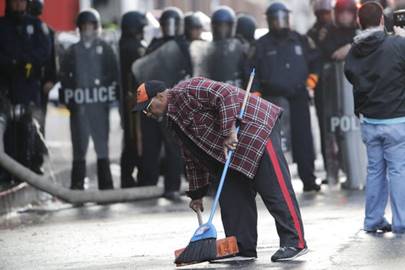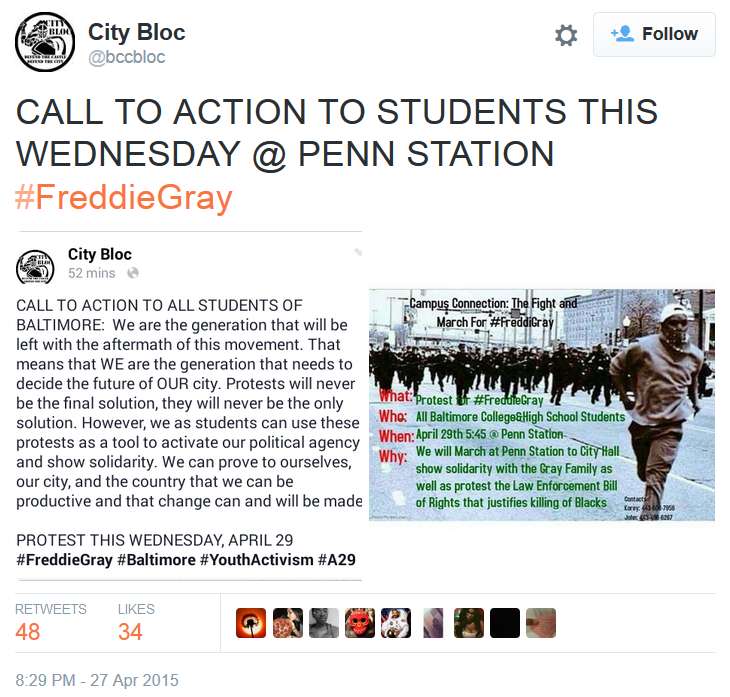The Community
"Listen first"12
- Tagline by the fellows from the Baltimore corps in the aftermath of the riots.
 The community plays an integral role in voicing their needs and participating in community forums to ensure their needs are heard. As the Baltimore City Health Commissioner, Leana wen, expressed above, preparedness plans often do not reflect the realities on the ground for unique situations that might arise. Despite having emergency plans in place, the communities themselves are the most important individuals in voicing the realities of a given situation. The community also played a large role in the city-wide clean-up efforts. As the New York Times reported, "Hundreds of people of all ages and races - many of them toting brooms and trash bags - worked to clear the neighborhood of rocks and debris."13
The community plays an integral role in voicing their needs and participating in community forums to ensure their needs are heard. As the Baltimore City Health Commissioner, Leana wen, expressed above, preparedness plans often do not reflect the realities on the ground for unique situations that might arise. Despite having emergency plans in place, the communities themselves are the most important individuals in voicing the realities of a given situation. The community also played a large role in the city-wide clean-up efforts. As the New York Times reported, "Hundreds of people of all ages and races - many of them toting brooms and trash bags - worked to clear the neighborhood of rocks and debris."13
Religious Leaders
|
"There has been a crisis in Baltimore County even before the governor declared an official state of emergency -- an emergency of poverty, unemployment, and disenfranchisement from the political process."
- Clergy member speaking to a WBAL TV reporter during the interfaith march through west Baltimore during the looting and riots, WBALTV, April 27, 2015 & the Huffington Post, April 29, 2015. |
Religious leaders of different faiths, from Christians to Muslims, marched together in unity through the streets of West Baltimore during the persistent unrest. Over 100 clergy members linked arms and marched towards the line of police patrolling the streets, stopping to kneel and pray along the way. The clergy members also reportedly convinced armed officers to march back through the streets with them, leading the way to address other areas of violence.14 The New York Times further reported that nearly 1,000 people gathered at the Empowerment Temple A.M.E Church on Tuesday evening, April 28th 2015, to hear approximately 500 religious leaders of different faiths call for "healing". Members of the community voiced their concerns about job creation, education, and policing.15
Students
In the midst of the riots, college students collectively voiced their concerns through street protests and social media. A group called "City Bloc" emerged on twitter to organize peaceful demonstrations, while other students across high schools and universities peacefully took a stance on the streets.16

Other students, along with faculty and staff from colleges and universities in the area helped with city hotlines, outreach, and cleanup activities. They helped in creating community notifications and educational material to notify the community of services available during this period. Students also played an important role in engaging with their respective schools in discussions pertaining to the riots and the underlying social and economic issues facing Baltimore.17

